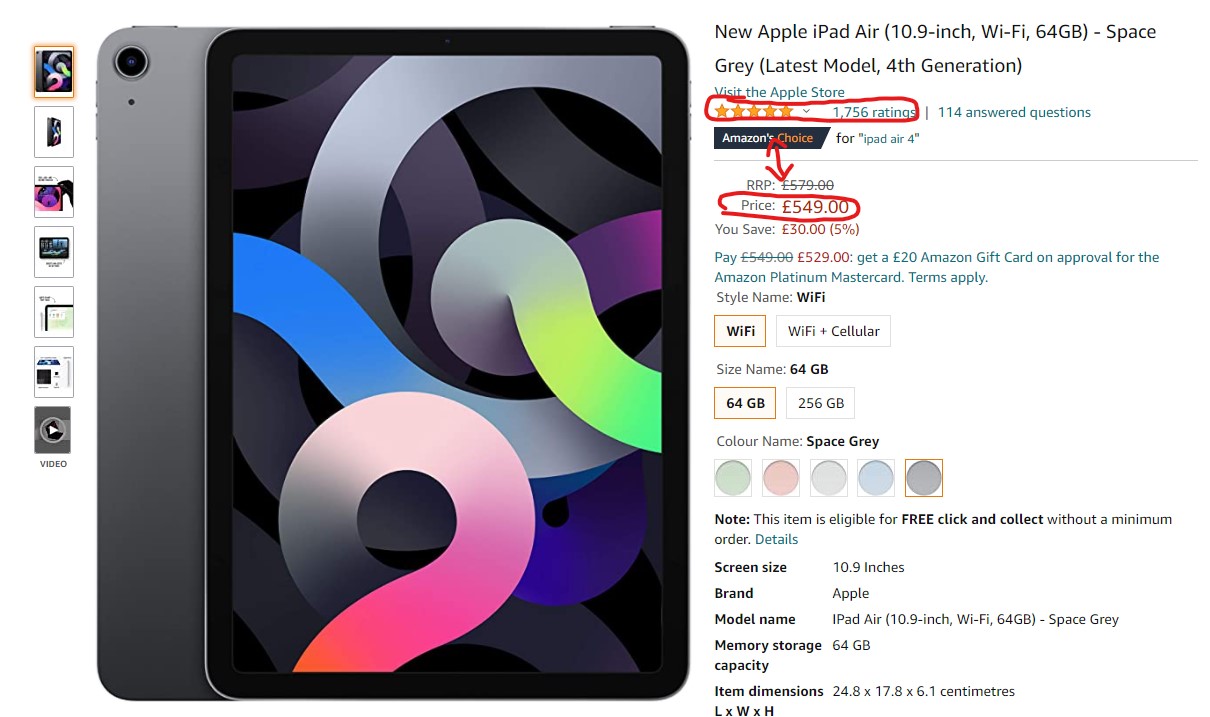The logic behind competitive ecommerce pricing
There’s no way around this – pricing for ecommerce can be very tricky. You need to account for competition with other sellers, but you don’t want to de-value your products in a race to the bottom. Competitive pricing can lead to disappointing results: you might not sell enough to compensate for offering the lowest prices. Or even worse, your products can and will be viewed as lower quality, only because of the extremely low price that you offer, even if this isn’t true.
Usually, a profitable pricing strategy involves considering everything from your competitors’ prices to their customers, your customers and everything in-between. Sellers use their understanding of potential customers’ decision-making processes to create pricing that encourages purchases.
Different types of companies have been experimenting with psychological pricing for years, but it’s important to understand how it applies in ecommerce where competition among online sellers is rampant. When sellers set prices in a way that motivates buyers to purchase, without devaluing their products, they are able to win more sales than competitors.

Moving on, we’ll split this blog into 4 distinct categories and talk about each of them, and explain what exactly they mean:
- branding
- user wants
- social proof
- numbers
Pricing around your brand
The amount a customer is willing to pay usually boils down to their perception of your brand. In other words, how valuable your products are and/or appear to be. If you want to charge higher prices than your competitors, you have to clearly state why your product is better and more valuable to buyers through your unique value proposition.
A unique value proposition indicates how a product is different from its competitors and why it’s the best choice for solving a buyer’s problem. This promise of what a product offers signals to buyers how much they should pay for their product.
In order to make sales at their desired price point(s), sellers should focus on messaging that conveys why their product is high-quality and worth more than their competitors’. When sellers have a positive attitude towards their brand, they gain their customers’ trust and are able to charge profitable prices to buyers who are willing to pay for the promised value.
Here’s a great tip – try to define your unique value proposition if you haven’t already.
You need to identify what sets your brand apart from competitors so that buyers feel justified in paying your set price. Let’s take Apple as an example. Apple’s branding, for example, positions the iPhone as a one-of-a-kind product, so consumers feel comfortable paying premium prices for it. In Apple’s vision and marketing, there aren’t any other smartphones or tablets on the market. They make it seem as if the iPhone is the only smartphone that’s worth considering.

Social proof
Online shopping sometimes requires a leap of faith and trust since you can’t interact with your merchant in person. With less reason to trust online companies, buyers look to the experiences of others before making a purchase. Considering the opinions of other buyers, consumers decide whether they’ll pay a seller’s price through the phenomenon of social proof.
Social proof is the psychological tendency of assuming that others’ actions reflect correct behavior. The phenomenon can cause a dramatic boost in sales when consumers see evidence of product satisfaction, such as positive product reviews. This is why we always say that reviews are extremely important, both to you as a seller and to the buyer.
We recommend to place customer ratings and reviews as close as possible to the price. Consumers are more encouraged to buy an item when they see that the product has high ratings. Most product pages take this motivation into account by placing the item’s rating right next to its prices. Sellers who want to encourage buyers even further to make a purchase should also consider placing the reviews close to the price as well, like in the example below:

Numbers
The arrangement of numbers in a price, regardless of the amount, has a huge impact on buyers’ willingness to pay due to some basic human psychology about how we judge things quantitively. The framing of prices — how many digits they contain, which numbers they end on — will often make amounts seem more or less expensive to buyers.
This is a quick one – and we’re sure you’ve seen it everywhere. But try to always sell your products for 1p less, i.e. 29.99$ instead of 30$, 99.95$ instead of 100$, etc. This is self-explanatory, as it gives the perception of the product being a bit cheaper. We can all agree that 29.95 sounds cheaper than 30, right?
Pricing around what your buyers actually want
Here’s another secret – when customers shop online, they have a rough idea of how much they want to pay and how badly they need certain products. Sellers have to price according to these desires to ensure that customers will complete their purchases.
Sellers who don’t pay attention to what their customers care about won’t have a sense of their buyers’ willingness to pay. Without this knowledge, you can’t ensure that your buyers will find your price acceptable and purchase your product. You also won’t know how to tap into consumers’ concerns on your pricing page and push them to make their purchases.
To sum up
The golden rule is to try to price your products in a way that you know it will be attractive to your potential customers. By doing so, you’ll encourage purchases, while also improving your brand’s image and perceived quality.


